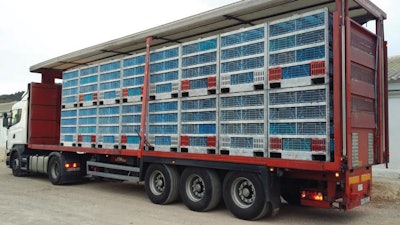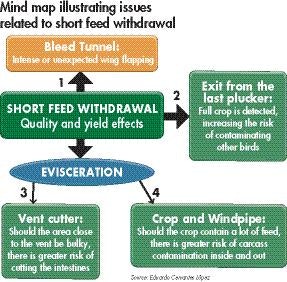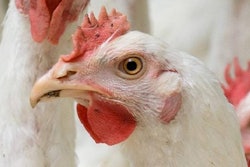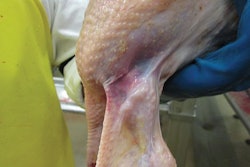
Minimizing waste and reducing costs at the poultry processing plant is a continuous concern for plant managers. A plant may have good equipment, well-trained staff and even offer performance incentives, but cutting waste and saving money are all too often goals that prove difficult to achieve.
To address these issues, the processing teams, quality control and maintenance staff all need to be aligned with the same goal. One way of achieving this can be through the use of the management tool known as mental maps.
These maps illustrate the conditions that must be achieved for the smooth processing of birds on a daily basis and should be displayed in a prominent position in each of the sections of the plant.
The management team will not see each and every bird that is processed or be able to control the many details that can lead to meat losses, resulting in increased operational costs. Due to this, one of their main responsibilities must be to explain the relevance of mental maps to the entire workforce.
It is the workers that see the chickens each and every day, putting them in the best position to monitor quality, identify if quality falls, and to take action if problems arise.
A simple example can be used to illustrate this. If a decline in the quality in the pluck of wings and tails become evident, the reason for this must be immediately identified. There could be various causes, for example, birds not being submerged in the scalding tank, the settings of the stunner being wrongly changed, or an alteration in the water temperature during plucking. Once identified, workers in the area where the problem has originated can be alerted so that necessary adjustments are made.
In many plants, this approach is not followed and workers continue with their duties oblivious to issues further down the line.

A mind map, like pictured, can offer a simple explanation of how issues in one area may lead to problems in others. (Eduardo Cervantes López)
To fix this, there should be regularly updated staff training, in many processing plants this already occurs, yet waste and losses continue.
Neuroeconomy, which explains human decision making, may offer some solutions to this problem as it can provide the mental infrastructure to help achieve company goals.
The brain has two systems for making decisions. The reward system recognizes the benefits of completing tasks via required actions, while the loss aversion system leads to negative decisions based on environmental evaluation and identifying negatives.
When the brain reward system is activated, for example, through an incentives program, the neurotransmitter dopamine is activated, leading to a state of pleasure, and this helps workers to direct their attention to any details that might put any reward in jeopardy. Offering an additional payment, may help to stimulate the brain processes to ensure that the payment is received. These payments may encourage learning and enhance performance.
Keeping the brain activated in this way can help to build a culture that is aligned with company goals, while changing a culture of punishment or sanction can help to prevent aversion to loss decisions being taken. A good example of this approach is that of vehicle insurance companies that reward clients that report no accidents at the end of the year.
Importance of illustration
How well operations are managed can be expressed as a percentage, but data alone may not be enough to change workers’ thinking.
The number of birds that arrive at the processing plant dead due to heat stress, which could reasonably be 0.10% or less of the total received. If a company processes 100,000 birds per day, this would equate to 100 birds. If the daily average loss is 150, an additional 50 birds, or 0.05%, a company may decide to address this figure, but what would be the best way to achieve this?
Neuroscience may give us some indicators of how to achieve this. If we want staff to achieve a target, we need to awake an interest in learning and, along with this, a monetary reward may be appropriate.
It may be deduced that these 50 additional lost birds per day represent 15,600 lost birds annually, or put another way, the loads of five trucks that transport 3,120 birds each. As simple numbers, this information may not make a great impression, but showing staff photographs of these five trucks full of dead birds parked at particular points on the farm or at the plant may make a greater impression.
A similar approach may be used, for example, with water leaks and loss, or packing paper.
Pygmalion Effect
The pygmalion effect refers to the changes that may occur in a person’s behavior due to others’ expectations.
If a worker believes that the company trusts and views them positively his or her performance will improve, and expectations are more likely to be met, leading also to greater self-confidence. In short, our brains are influenced by those around us.
When we believe that a company has a high degree of confidence in us, oxytocin is released into the brain leading to greater confidence in ourselves, our colleagues, and in the company itself. This strengthens the brain reward system, leading to more satisfaction, making learning more attractive and assigned goals easier to achieve.
For application of the pygmalion effect, take the example of lowering the number of rejected birds that quality control inspectors might find at various stages of processing. Staff from the processing line, maintenance and quality control must be afforded the following:
- The greatest knowledge possible of the raw materials being processed, the birds, including their physiological reaction ante- and post-mortem
- An indepth understanding of the mini-details that influence the quality of live birds during processing
- A continuous training program for all staff so that they become integrated quality control supervisors
- A clear definition of the procedures to be followed should a problem be identified so that it can quickly be communicated to managers in the relevant areas, with the aim of finding a resolution as quickly as possible
- A properly communicated reward program for targets that have been met
- Creation of a “Greatest Challenge”, with additional payments should this be achieved
Staff should be encouraged to beat expectations which, in addition to benefitting the plant, will lead to commitment and satisfaction when goals are beaten, giving them economic peace of mind due to the extra payments that they will receive.

Employee engagement can benefit both the plant and the worker. (iStock, Olivier Le Moal)
How to manage rubber finger use during poultry processing

















